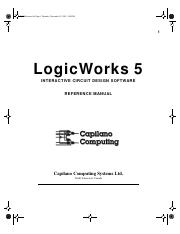


Some probes have a function to ‘catch’ a transition, meaning that the orange LED turns on and latches on until reset. To identify this, a logic probe can have a ‘pulse’ LED, usually orange, that may simply light when oscillating, or flash at a fixed frequency when a pulsed signal or clock is running. The main issue is knowing whether the system is clocking, or held in a high impedance state or centre voltage (i.e., between a logic “0” and a logic “1”). On low speed systems, a flickering pair of red and green LEDs might be enough to say the clock is ticking, but even experienced technicians have difficulty on faster systems. In a system where the logic is ‘state determined’ and the outputs don’t change unless an input is changed, logic “0” and logic “1” are quite sufficient.

In fact, a technician would probably pull out an expensive CRO or logic analyser by then anyway. For hobbyists, unless chasing a glitch at the very edge of a system, or attempting maximum “fan-out” (loading), where noise can cause false logic, a hobbyist can suffice with 0V to 0.8V as acceptable logic “0”, and above 2V as logic “1”.
SIGNAL PROBE ON LOGICWORKS 5 PROFESSIONAL
So a professional probe requires a different design for each system, or a switch to select the system in use. Logic “1” levels for TTL inputs (both 5V and 3.3V systems) need to be greater than 2V but for CMOS, on a 5V supply, the inputs need to be above 3.5V to be a valid “1”. TTL, either 5V or 3.3V systems, expect the output voltage to be from 0V to 0.5V, while the CMOS system expects the output voltage to be less than 0.05V – the main reason for lower power requirement of CMOS. Thankfully, a 3.3V system still uses TTL levels for logic “0” (i.e., 0.8V). Then, we realise that the Arduino, along with many other computer systems, use either 5V or 3.3V rail voltage as a modern option. The truth is, TTL accepts from 0V to 0.8V as meaning a logic “0”, and CMOS accepts 0V to 1.5V as logic “0”, at least on a system with 5V rail voltage (and up to 4V on a system with 15V rail voltage). In fact, most systems never actually reach exactly 0V. You might say 0 volts for logic “0”, which although commonly agreed with, is not completely correct. So let us begin by defining our logic probe as intended for TTL. Many systems have existed, most are now gone, relay, DTL, ECL and so on. On some logic systems, the probe would read up to 48V for a logic “1” on relay logic, and perhaps +/-12V on other systems. This may sound simple, but it’s not necessarily the case.įirstly, it will help to know what type of system it will be used on. Therefore, they may make mistakes in interpreting an open circuit or dead gate.Īs we mentioned, typically logic probes read logic “0” and logic “1”. Also, multimeters read logic “0” or logic “1”, but not all meters can handle levels in between. It also clearly shows three conditions using two of those LEDs. The logic probe has two or three coloured LED indicators near the probe tip, so the user can see the result without looking away. HOW IS A LOGIC PROBE BETTER THAN A MULTIMETER? They can also be inconvenient for example when you’re trying to hold a probe on a tiny pin, and you need to avoid touching the many other tiny pins that sit around it, when looking back and forth at the meter. Multimeters often have a logic function, but they can be slow, insensitive, and inaccurate. The logic analyser is a terrific instrument, but overkill and usually over-priced for hobbyists. Robotics, 3D printers, CNC mills, routers, and so on are all applications of the inputs and outputs of computers, being used to drive mechanical and opto-electric devices. Recently I was asked if I could make a logic probe and that is where this story began. Eventually I saw some articles about logic probes and built one, using just four transistors and a few resistors. It didn’t take much more circuitry before I needed something better to test these circuits. Later on I used logic ICs, 74xx devices in my first computer that consisted of seven ICs. I knew electronics, but had never even heard of TTL or any of the digital logic technologies, except for switches and relays as I was, at that time, an apprentice electrician. Many years ago I learned logic as a means to control stage lighting for rock bands. Logic works when the signal levels comply with logical requirements, (i.e., standards). Logic sometimes fails, however, when the analog levels that control the inputs to gates, or the loading on the outputs, cause a misunderstanding. Why do we use logic? Because all modern computers use logic. This is the first of our discrete projects! A logic probe is a powerful tool for any maker to have, since it simplifies debugging and testing.


 0 kommentar(er)
0 kommentar(er)
